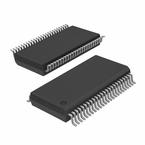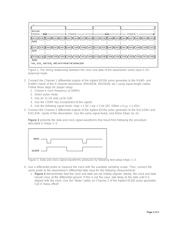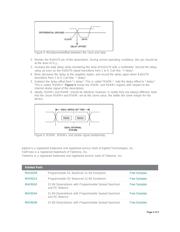herunterladen

Maxim > Design Support > Technical Documents > Application Notes > Automotive > APP 4058
Maxim > Design Support > Technical Documents > Application Notes > High-Speed Interconnect > APP 4058
Keywords: skew, margin, RSKM, receiver, deserializer, LVDS, interconnect, strobe signal, inter-symbol
interference, ISI, jitter, data, clock, misalignment
APPLICATION NOTE 4058
Measuring Skew Margin on 4-Channel Deserializers
Jul 02, 2007
Abstract:
The skew
margin of an LVDS deserializer is an indication of its jitter tolerance. This application note
describes conditions that can limit skew margin, and it presents a procedure for measuring skew margin on
4-channel deserializers.
Introduction
The skew margin of an LVDS deserializer is an indication of its jitter tolerance. Application Note 3821: Skew
Margin Measurement for 4-Channel (3 Data Channels Plus Clock Channel) LVDS Serializers/Deserializers
demonstrates an approach for measuring skew margin by utilizing a serializer and LVDS interconnect. This
application note describes how to measure skew margin utilizing only a deserializer. The outlined procedure
can be used for virtually any LVDS deserializer.
Receiver Skew Margin (RSKM)
RSKM is a valid timing window in which a deserializer can correctly sample LVDS input data. To sample the
data within the data-bit time (unit interval or UI), a timing strobe signal is generated from the LVDS input
clock. Ideally, this strobe signal should be positioned in the middle of the data pulse, so the maximum RSKM
can approach half of the LVDS data bit. However, many nonideal, internal and external conditions can reduce
the available timing margin to the point where the sampling window closes and data "errors" develop.
Some of the internal chipset parameters that can limit RSKM are listed below:
1. Deserializer internal strobe uncertainty, which is related to data setup and hold timing requirements
2. Transmitter pulse position variation, which is the change in the position of individual serializer output
data bits with respect to the serializer LVDS clock
Other RSKM-reducing factors are related to LVDS interconnect and include:
1. Cable skew
2. Intersymbol interference (ISI)
3. Parallel input-clock jitter passed by the serializer to the deserializer
Improving RSKM
The main factors contributing to cable skew are cable length, cable type, and cable quality. The following
design recommendations can be implemented to improve RSKM:
1. Use short, high-quality cables with a low skew per unit length (10–20ps/ft). Note that the total skew
path also includes the connector and PCB trace skew. Good quality connectors and good board layout
practices (e.g. matched trace lengths) add little or no skew.
Page 1 of 5







